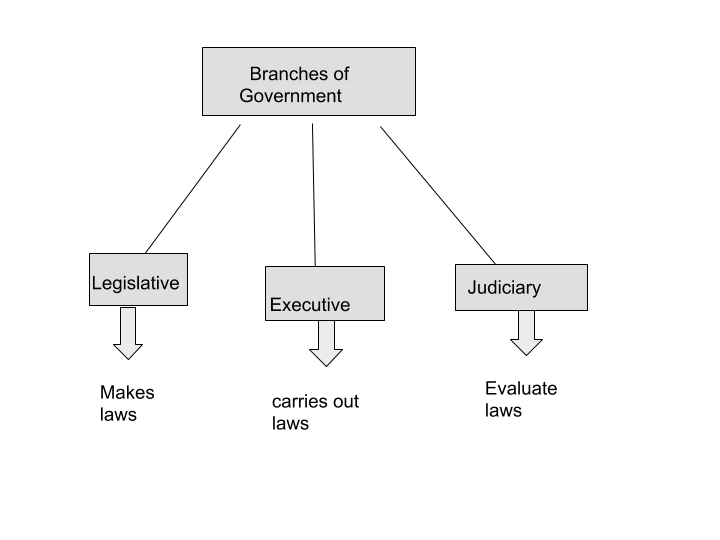
What is meant by the judiciary? Describe its composition. What powers does the Supreme Court exercise?
Answer
554.1k+ views
Hint: The Supreme Court is the highest court of the Indian democracy. Judiciary, the third organ of the government has an important role to play in governance. India has a single unified judicial system and that is the Supreme court the highest court in India.
Complete answer:
There are three organs of the government as shown in the diagram

The federal court was established under the Government of India Act.
Composition: The chief justice and other judges of the Supreme court have been appointed by the President of India. The original Constitution of 1950 envisaged a supreme court with a chief justice and 7 other judges.-leaving it to the parliament to increase this number. The Supreme Court which at its inception began with 8 judges which grew to a strength of 34 Judges.
High Court: Article 214 of the constitution provides that there shall be a high court for each state.
After the Supreme Court at the district level, it is the high court.
Subordinate court: Article 233 to 237 in Part VI of the constitution provides the organization of subordinate court.
Powers of Supreme Court:
1.Guardian of the Constitution
2.Original Jurisdiction
3.Review (Revisory Jurisdiction)
4.Power of Judicial Review
5.Advisory Jurisdiction
Court of Records
Note:On 28 January 1950 the Supreme court came into being. Indian Judiciary has also taken reforms to instill transparency in the Indian judicial system. However, the Indian judiciary should strike to balance between transparency and accountability and to maintain the Independence of the judiciary.
Complete answer:
There are three organs of the government as shown in the diagram

The federal court was established under the Government of India Act.
Composition: The chief justice and other judges of the Supreme court have been appointed by the President of India. The original Constitution of 1950 envisaged a supreme court with a chief justice and 7 other judges.-leaving it to the parliament to increase this number. The Supreme Court which at its inception began with 8 judges which grew to a strength of 34 Judges.
High Court: Article 214 of the constitution provides that there shall be a high court for each state.
After the Supreme Court at the district level, it is the high court.
Subordinate court: Article 233 to 237 in Part VI of the constitution provides the organization of subordinate court.
Powers of Supreme Court:
1.Guardian of the Constitution
2.Original Jurisdiction
3.Review (Revisory Jurisdiction)
4.Power of Judicial Review
5.Advisory Jurisdiction
Court of Records
Note:On 28 January 1950 the Supreme court came into being. Indian Judiciary has also taken reforms to instill transparency in the Indian judicial system. However, the Indian judiciary should strike to balance between transparency and accountability and to maintain the Independence of the judiciary.
Recently Updated Pages
Why are manures considered better than fertilizers class 11 biology CBSE

Find the coordinates of the midpoint of the line segment class 11 maths CBSE

Distinguish between static friction limiting friction class 11 physics CBSE

The Chairman of the constituent Assembly was A Jawaharlal class 11 social science CBSE

The first National Commission on Labour NCL submitted class 11 social science CBSE

Number of all subshell of n + l 7 is A 4 B 5 C 6 D class 11 chemistry CBSE

Trending doubts
Differentiate between an exothermic and an endothermic class 11 chemistry CBSE

10 examples of friction in our daily life

One Metric ton is equal to kg A 10000 B 1000 C 100 class 11 physics CBSE

Difference Between Prokaryotic Cells and Eukaryotic Cells

1 Quintal is equal to a 110 kg b 10 kg c 100kg d 1000 class 11 physics CBSE

State the laws of reflection of light




